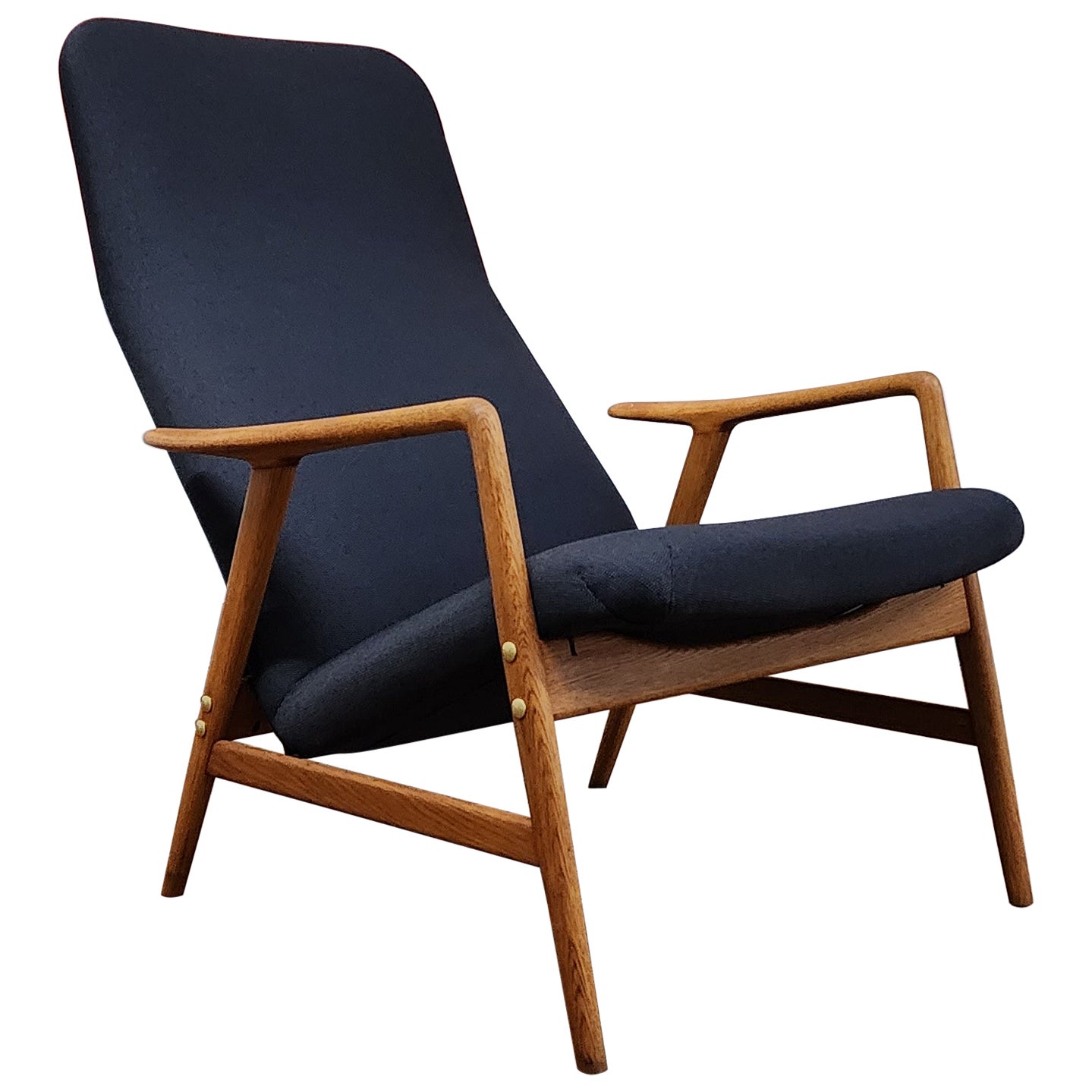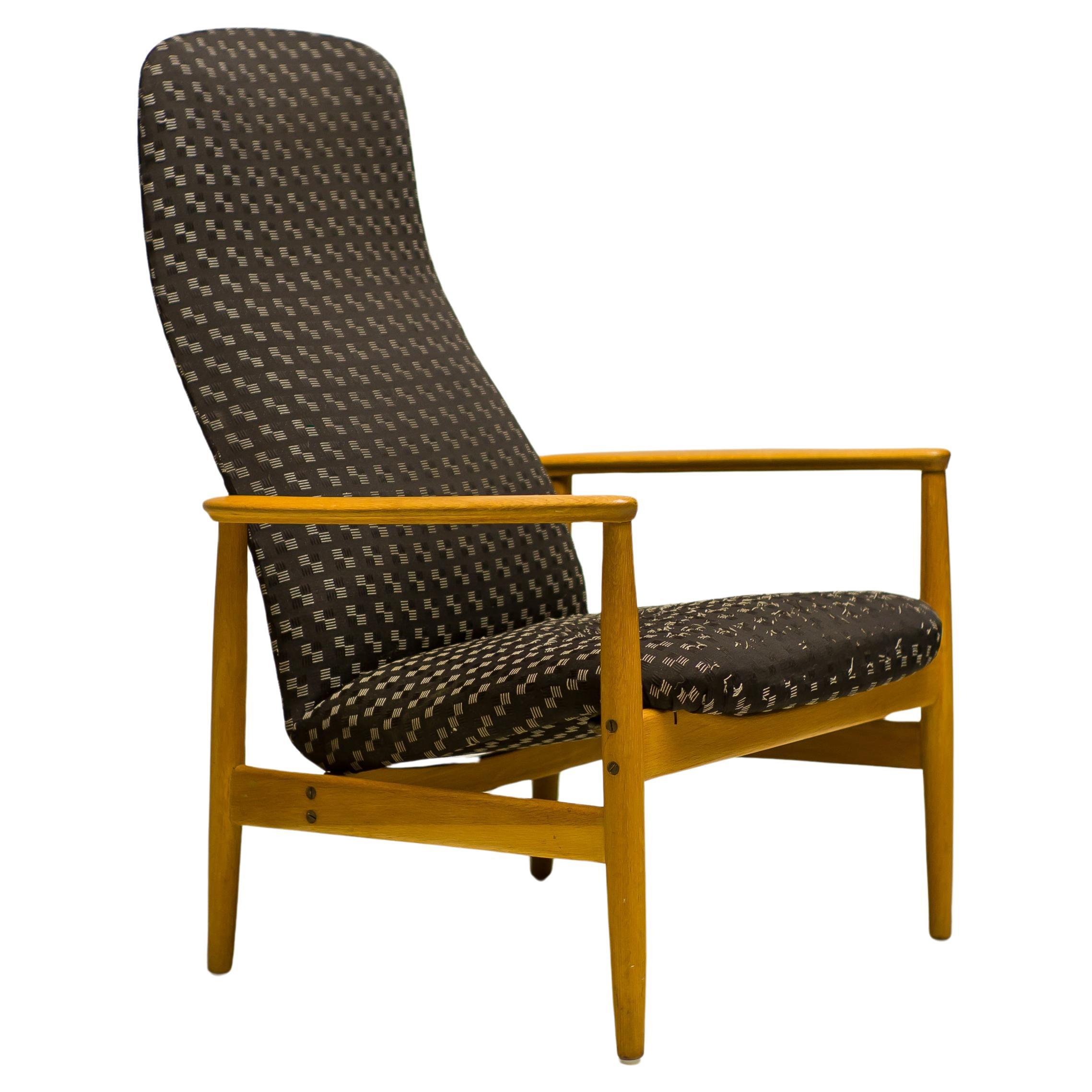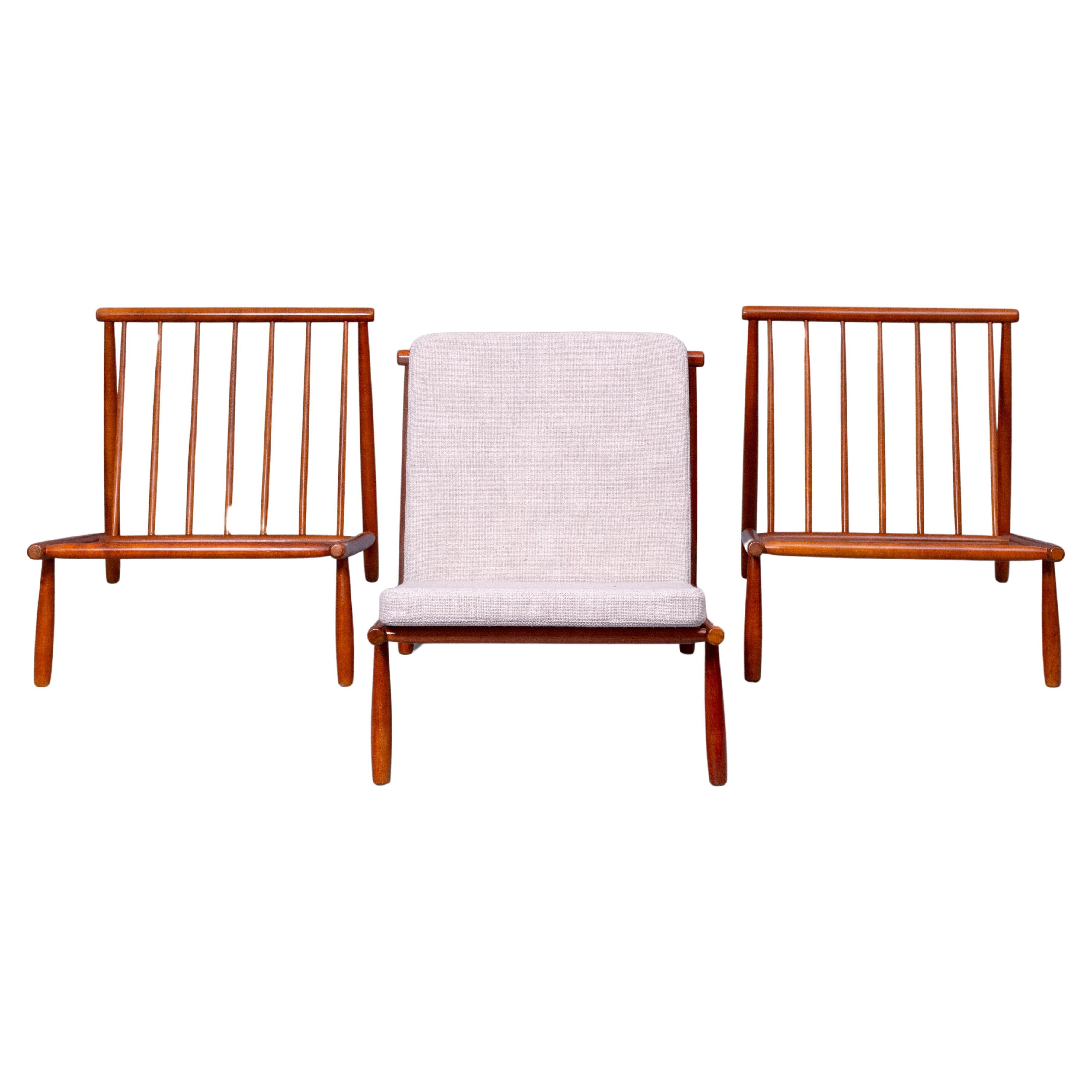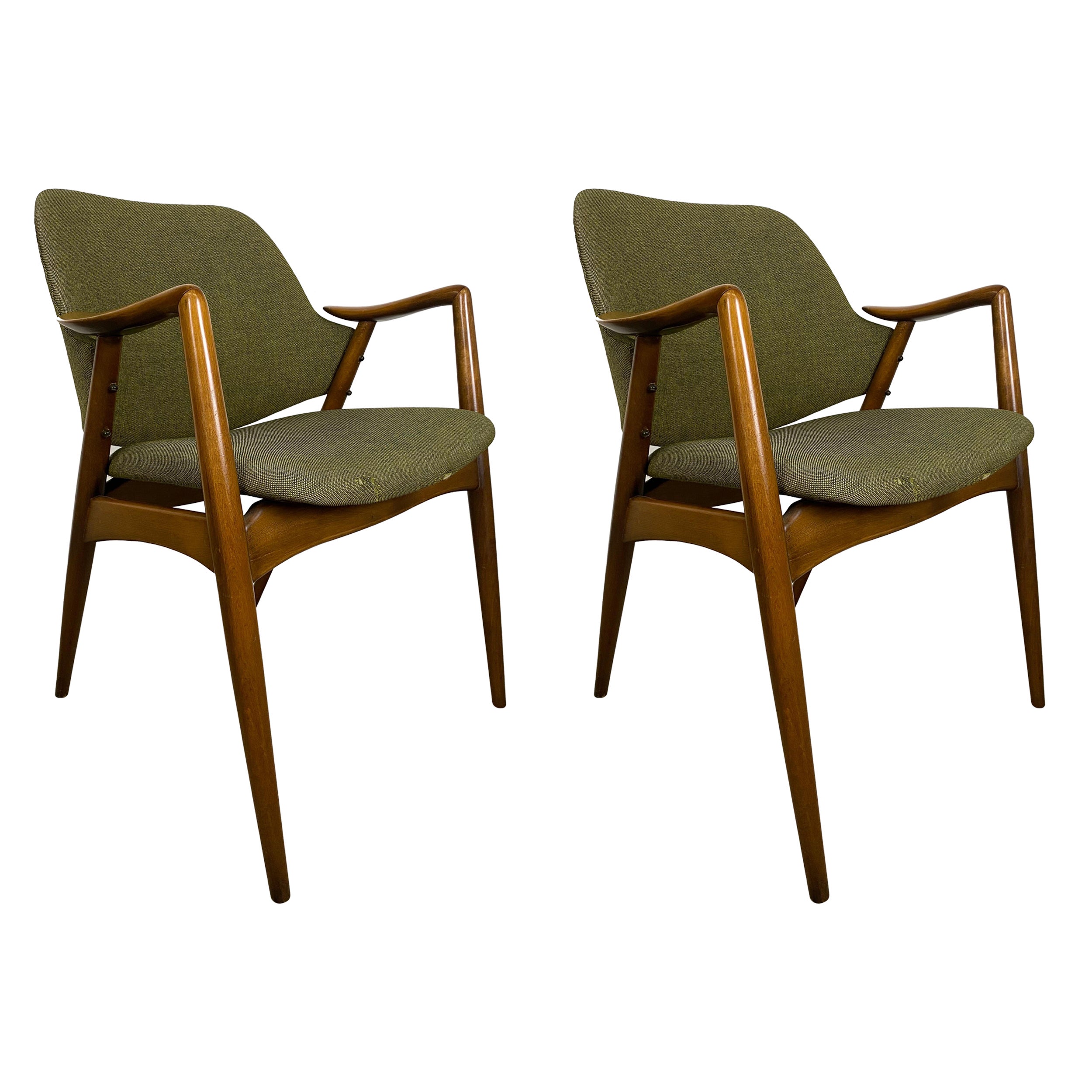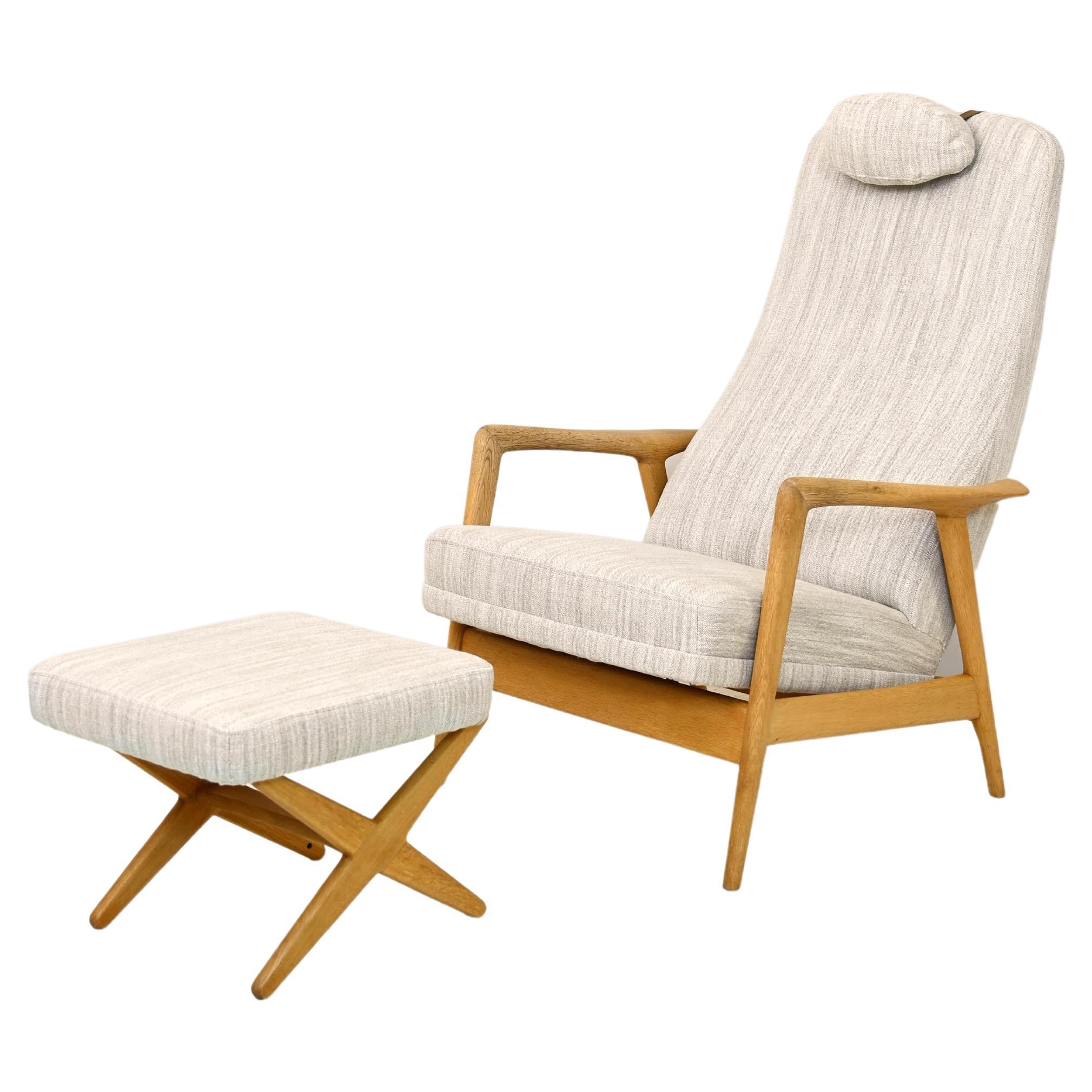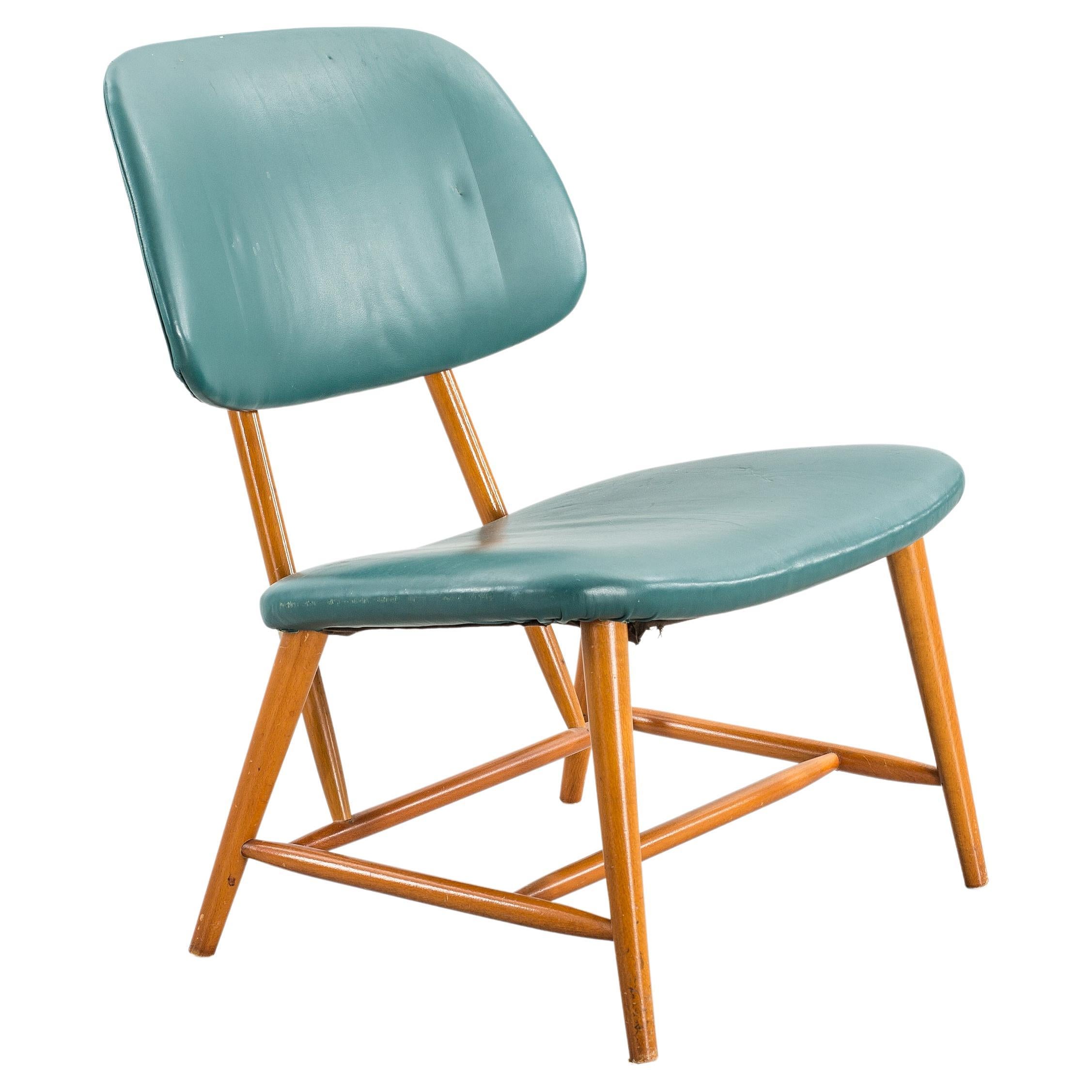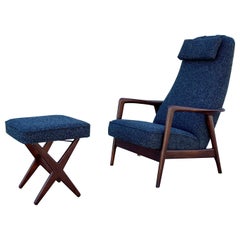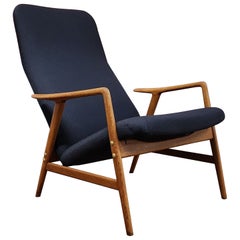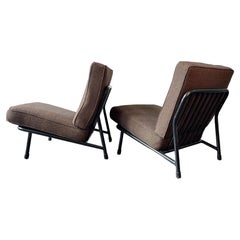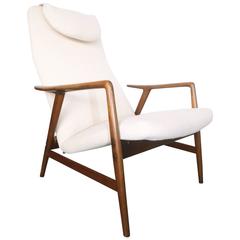
Alf Svensson Reclining Lounge Chair for DUX
View Similar Items
Alf Svensson Reclining Lounge Chair for DUX
About the Item
- Creator:Alf Svensson (Designer),Dux of Sweden (Manufacturer)
- Dimensions:Height: 41 in (104.14 cm)Width: 29 in (73.66 cm)Depth: 30 in (76.2 cm)
- Style:Mid-Century Modern (Of the Period)
- Period:
- Date of Manufacture:1950s
- Condition:Wear consistent with age and use.
- Seller Location:St. Louis, MO
- Reference Number:1stDibs: LU91514123643
Alf Svensson
Swedish architect and furniture designer Alf Svensson worked with a range of organic materials that are today commonly associated with Scandinavian modernism, utilizing rosewood, oak and teak in his cabinets, chairs, tables and other furniture, and opting for leather when it came to creating upholstery for his sleek seating. He worked for several manufacturers including String Seffle AB, Bergbom & Co., Nybrofabriken and Nesto but is best known to collectors for the designs he created for DUX.
As creative director at Bergboms, Svensson worked with brass and opaline glass to create a range of lighting. He designed sculptural tripod-style floor lamps with bodies of steam-bent solid teak — a popular material with furniture makers of the mid-20th century — while his hanging ceiling lights featured lacquered metal shades that bring pops of color into living rooms and entryways.
Svensson’s role at the lighting manufacturer, which was founded in 1940 by Efraim Ljung — also the founder of Ljungs Industrier — saw him collaborating with the likes of legendary designers such as Greta Magnusson Grossman and Edward Wormley, a favorite of mid-century modern furniture collectors and the longtime director of design for the Dunbar furniture company.
Svensson also served as the creative director at Ljungs Industrier. In Sweden, Studio Ljungs Industrier AB is the large family-owned parent company of Duxiana (in America, DUX). In 1950, Folke Ohlsson, then leading Ljungs Industrier’s design team, decamped to the States to explore how he could expand DUX’s business, which at that point included a wide range of furniture. It was during this time, in the postwar era, that American tastemakers really sold the citizenry on the warmth and good craftsmanship that characterizes Scandinavian modern design.
Ohlsson established a DUX office not long after he arrived in California, first in San Francisco and later in Burlingame. Svensson, a chief designer in the Malmö, Sweden, office of Ljungs Industrier, was among the top-tier furniture design talent with which DUX collaborated (a list that included Wormley and Bruno Mathsson). Svensson’s Galaxy chair, a comfortable upholstered swivel seat attributed to a partnership between the designer and Yngvar Sandström that exudes Space Age charm, is highly sought after, and Svensson's relationship with DUX yielded similarly attractive sideboards, lounge chairs and other furnishings that are some of his most celebrated works.
Find vintage Alf Svensson furniture on 1stDibs.
Dux of Sweden
Today, Swedish manufacturer DUX’s most popular furniture lines — as well as the furnishings created by its first president, Folke Ohlsson — are synonymous with the work that vintage mid-century modern design obsessives love. Also important, the brand is known for some of the most commonplace means of furniture shipping and production in the modern era.
In Sweden, Studio Ljungs Industrier AB is the large family-owned parent company of Duxiana (in America, DUX). Initially a purveyor of bedding that is today celebrated for its ergonomically guided designs, Ljungs Industrier was founded by entrepreneur (and chocolate maker) Efraim Ljung in 1926. In 1950, Folke Ohlsson, then leading Ljungs Industrier’s design team, decamped to the States to explore how he could expand DUX’s business, which at that point included a wide range of furniture. Ohlsson established a DUX office not long after he arrived in California, first in San Francisco and later in Burlingame.
On the West Coast, the booming postwar American market was eager to embrace DUX’s affordable and practical bedroom furnishings, tables, armchairs and other seating. Characterized by sleek walnut and teak frames and low-slung silhouettes, the brand’s designs were emblematic of a generation of Scandinavian modernism that had gained popularity owing to visionaries such as product designer and architect Greta Magnusson-Grossman, who arrived in California from Sweden a decade prior to Ohlsson, and Finn Juhl, who created a Danish modern line for Michigan’s Baker Furniture Company in 1951.
DUX frequently collaborated with top-tier furniture design talent — among them Bruno Mathsson, Edward Wormley and Alf Svensson, a chief designer in the Malmö, Sweden, office of Ljungs Industrier — expanding the brand’s portfolio and establishing credibility as a design source. Ohlsson’s own designs, such as his comfortable leather lounges and wool-upholstered reclining rocking chairs, continue to be among the brand’s most desirable — and most imitated — however.
In 1949, DUX put into practice an idea that Ohlsson patented for the so-called “knock-down,” or “KD,” chair, a term referencing easy, flat-pack assembly. It saved DUX space in warehouses and money on transportation and was a concept that would provide inspiration to hundreds of subsequent companies — most notably fellow Swedish brand IKEA.
Today, vintage DUX sofas and dining chairs are valuable collector’s items. Find this coveted seating and other authentic DUX furniture on 1stDibs.
You May Also Like
Vintage 1960s Swedish Mid-Century Modern Lounge Chairs
Fabric, Walnut
Vintage 1950s Danish Mid-Century Modern Lounge Chairs
Walnut, Fabric
Vintage 1960s Swedish Scandinavian Modern Lounge Chairs
Oak
Vintage 1960s Swedish Mid-Century Modern Slipper Chairs
Metal
Vintage 1950s Swedish Scandinavian Modern Lounge Chairs
Metal
Vintage 1960s Swedish Scandinavian Modern Lounge Chairs
Wool, Oak


